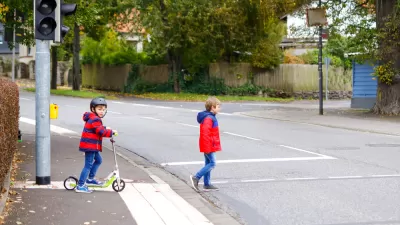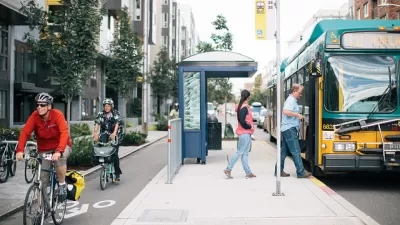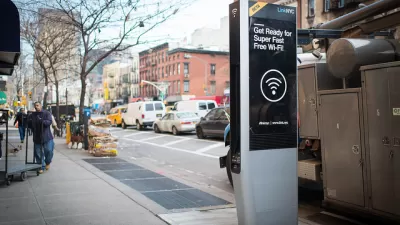A few weeks ago, I read a newspaper article commenting on a pedestrian who was killed in a car crash; the article suggested “educating pedestrians to cross at intersections.” But sometimes, some pedestrians are actually safer crossing mid-block. Here’s why: when I cross at the intersection nearest my suburban apartment, I have to look for traffic coming from a variety of directions: not just oncoming drivers in both directions who might run red lights, but also drivers turning from the corners of the intersection.
A few weeks ago, I read a newspaper article commenting on a pedestrian who was killed in a car crash; the article suggested "educating pedestrians to cross at intersections." But sometimes, some pedestrians are actually safer crossing mid-block.
Here's why: when I cross at the intersection nearest my suburban apartment, I have to look for traffic coming from a variety of directions: not just oncoming drivers in both directions who might run red lights, but also drivers turning from the corners of the intersection.
By contrast, if I cross in midblock, I only have to look at traffic coming in one direction at a time: in the northbound lane I look for traffic heading north, in the southbound lane for traffic heading south. So if there's not any traffic, I run for it.
On the other hand, midblock crossings are not for everyone. In the suburban area where I live, traffic goes very fast when it goes- but at times congestion is low enough that there are no cars nearby. So crossing anywhere near a car is dangerous because any crash is likely to be fatal - while on the other hand when there is no nearby traffic, crossing is safe regardless of the location.
On the other hand, in a more urban and/or congested environment where traffic flows more evenly, there will always be a few cars near you in the oncoming lane- so in that situation, midblock crossings are less safe. (And the slower traffic means that even if you are in the intersection, your risk of being seriously injured by a crash is lower).
And if you are too young or too visually impaired to see whether there are cars nearby, there is, alas, no good alternative to relying on traffic signals.

Alabama: Trump Terminates Settlements for Black Communities Harmed By Raw Sewage
Trump deemed the landmark civil rights agreement “illegal DEI and environmental justice policy.”

Study: Maui’s Plan to Convert Vacation Rentals to Long-Term Housing Could Cause Nearly $1 Billion Economic Loss
The plan would reduce visitor accommodation by 25% resulting in 1,900 jobs lost.

Planetizen Federal Action Tracker
A weekly monitor of how Trump’s orders and actions are impacting planners and planning in America.

Wind Energy on the Rise Despite Federal Policy Reversal
The Trump administration is revoking federal support for renewable energy, but demand for new projects continues unabated.

Passengers Flock to Caltrain After Electrification
The new electric trains are running faster and more reliably, leading to strong ridership growth on the Bay Area rail system.

Texas Churches Rally Behind ‘Yes in God’s Back Yard’ Legislation
Religious leaders want the state to reduce zoning regulations to streamline leasing church-owned land to housing developers.
Urban Design for Planners 1: Software Tools
This six-course series explores essential urban design concepts using open source software and equips planners with the tools they need to participate fully in the urban design process.
Planning for Universal Design
Learn the tools for implementing Universal Design in planning regulations.
Caltrans
Smith Gee Studio
Institute for Housing and Urban Development Studies (IHS)
City of Grandview
Harvard GSD Executive Education
Toledo-Lucas County Plan Commissions
Salt Lake City
NYU Wagner Graduate School of Public Service






























